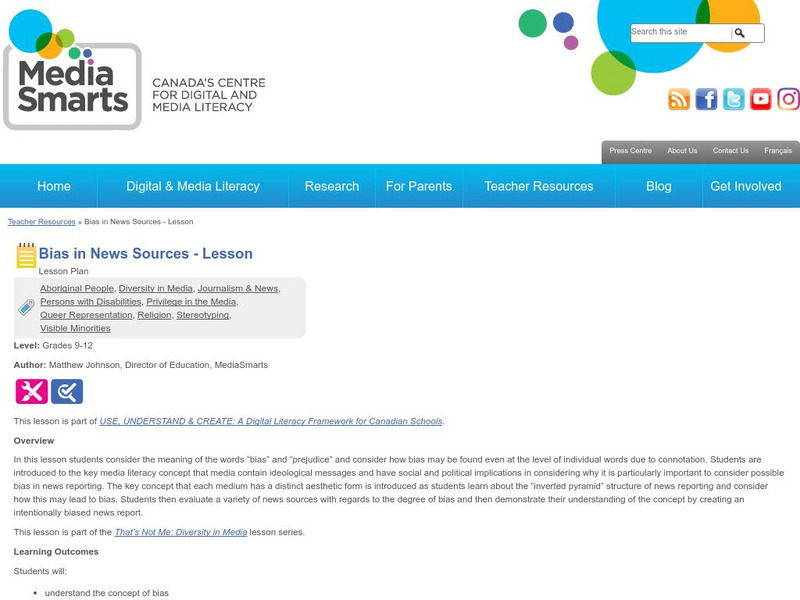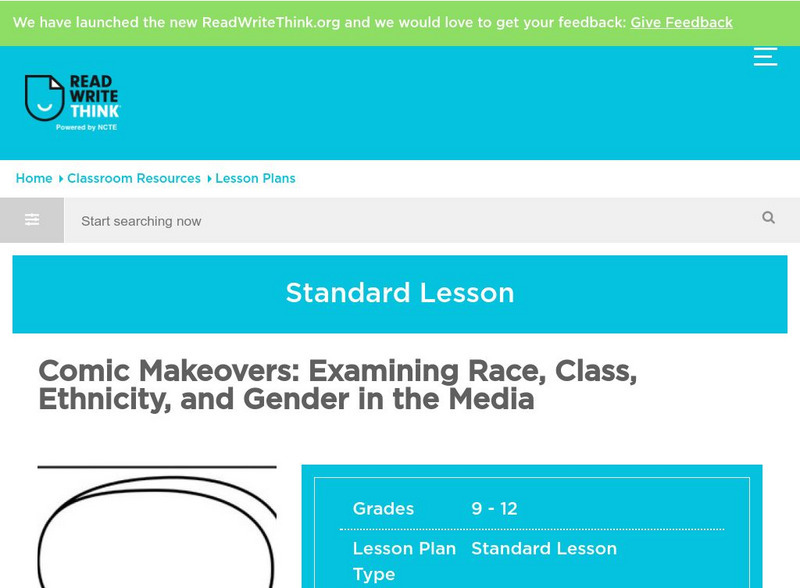Hi, what do you want to do?
Media Smarts
The Media Awareness Network: Bias
Slant, or bias, can be found in virtually every news outlet. Use this online lesson plan to help students understand how word choices and other factors can intentionally or unintentionally affect the audience's understanding.
ReadWriteThink
Read Write Think: Examining Race, Class, Ethnicity, and Gender in the Media
Contains plans for five lessons that teach students how to recognize and avoid stereotyping in media. In addition to objectives and standards, this instructional plan contains links to sites used in the lessons as well as assessment and...
Media Smarts
Media Awareness Network: What's in a Word? Lesson Plan
Help 5th through 7th graders explore the power of words and their capacity to influence our thinking with this lesson from the Media Awareness Network. An easy-to-print .pdf version is linked from the top of the page.
PBS
Pbs Learning Media: Point of View: Who, Me? Biased?: Understanding Implicit Bias
In this interactive lesson, learners explore the extent to which society (and they themselves) may discriminate based on factors they're not even aware of, implicit biases. Why haven't laws been enough to eliminate discrimination? After...
Louisiana Department of Education
Louisiana Doe: Louisiana Believes: English Language Arts: Grade 8: The Tell Tale Heart
Eighth graders explore the role of the narrator and point of view in a text. Students will understand how the narrative voice of a text can blur the line between fact and fiction and how a story truth is often different from but relates...
Library of Congress
Loc: The Titanic: Shifting Responses to Its Sinking
In 1912, popular media headlined the sinking of the world's largest luxury passenger ocean liner while on its maiden voyage. Newspapers captivated the world's attention with stories from survivors and about victims who did not survive....









